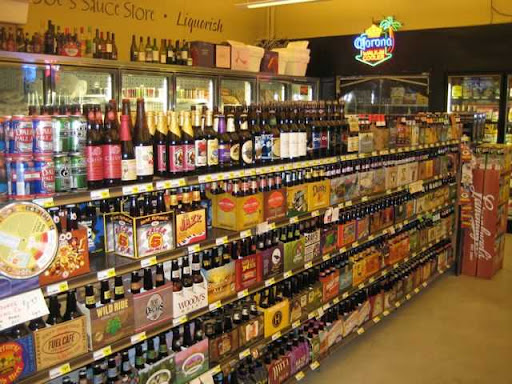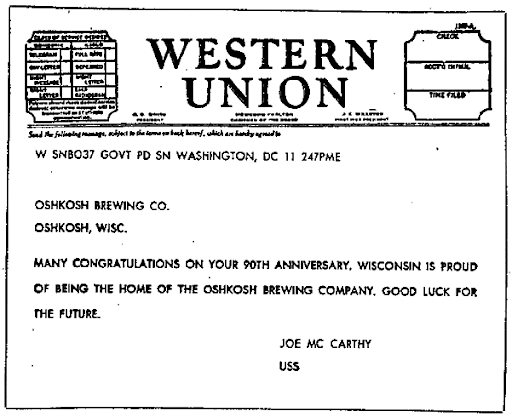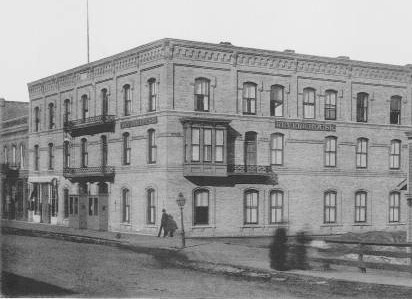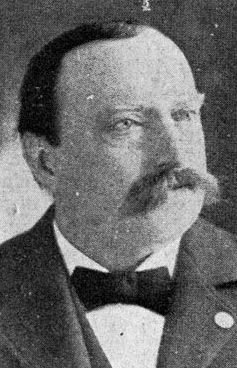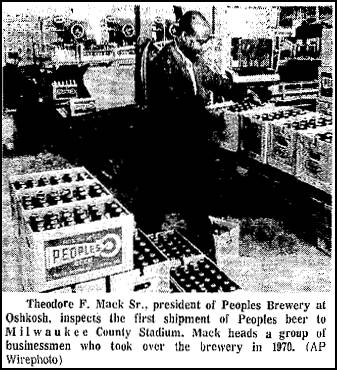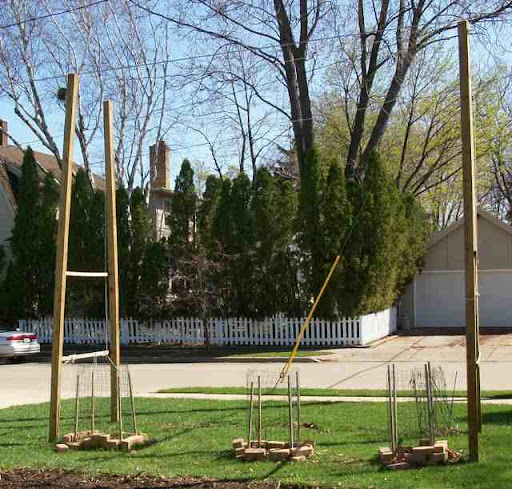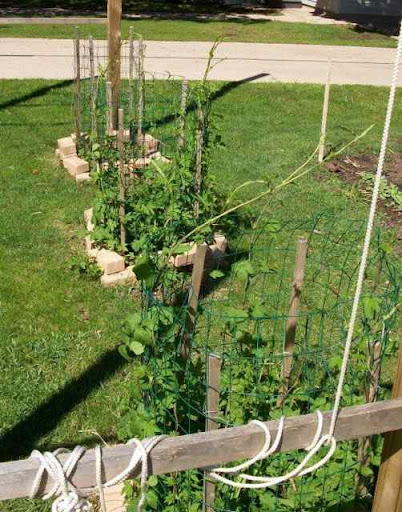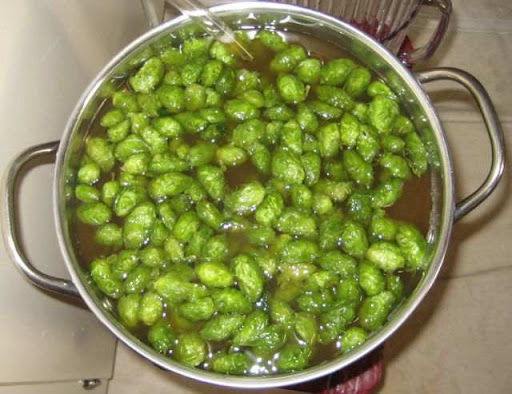We’re happy to have Joe Walts back. Joe is an Assistant Brewer for Fox River Brewing and today he’s covering session beers and his approach to brewing them. Now, here’s Joe.
– – –
 |
| Joe Walts Models the Intense Gaze of the Seasoned Brewer |
I don't think I'm an alcoholic. I don't drink at inappropriate times, like in my car on the way to work. My drinking habits aren't detrimental to myself or my family, unless the Red Wings are losing. However, my social skills improve dramatically when I have a drink in my hand. It's much more important than having alcohol in my blood. That's why I'm a big fan of session beers.
For the sake of discussion, let's define session beers as having 4.5% abv or less. Let's go even further and arbitrarily pinpoint the typical session beer, a rarity in the US, as having about 3.5% abv. With such a modest amount of sauce, you can drink fairly continuously over the course of a session without getting stupid. With stronger beers such as Double IPAs, it takes a lot of awkward breaks to maintain a responsible blood alcohol level. Even though I love big beers with big flavor, they're far less conducive to socializing than session beers (unless I'm hanging out with beer geeks).
From a brewer's perspective, session beers are challenging. Off-flavors stand out more than they do with strong beers, it's difficult to find a good balance between watery and syrupy, and it's nearly impossible to amaze people who don't get excited about subtlety. Astringency can be a problem if you're not mindful of your last-runnings pH, and session beers taste best at warm temperatures and low carbonation levels that aren't feasible with most commercial draught setups (i.e. all beers are in the same cooler and connected to the same CO2 regulator). Price is also an issue, and it's one that nobody on the supply side seems to understand:
- People don't want to repeatedly pay IPA prices for beer with 30% less alcohol than Budweiser.
- Selling session beers at lower prices could generate enough cash flow to justify the poor profit margins.
Yes, session beers require smaller quantities of ingredients than stronger beers. However, ingredients typically account for less than 10% of a beer's production cost while expenses such as labor and utilities are fairly constant from beer to beer. Pricing isn't really the point of this post, though, so let's get back to brewing. Over the course of experimenting with British session beers, I've come to appreciate two practices that have yet to go mainstream in US session beer production:
1. Shoot for a mash temperature around 149-150 degf so your beer is dry and invites you to drink more. Although you don't want your beer to be thin, the syrupy viscosity contributed by excessive dextrins will kill its sessionability. Brewers often react skeptically when I suggest mashing low for session beers, but
Vinnie Cilurzo of Russian River has my back.
2. Use
Belgian candi syrup for about 5% of your total extract. This will add layers of flavor that help combat the perception of wateriness. According to
Ron Pattinson, British brewers regularly use invert syrups in their beer. At least, they did in the 1950s when mild was still kicking ass and taking names. I don't know how the Belgian stuff compares with British brewing syrups (it's only partially inverted), which I've never encountered, but it sure tastes nice. I've had a lot of success using the dark variety for milds, and I'd wager that D2 would be a winner as well. The next time I brew a bitter, I'll probably use the amber syrup.
If you'd rather make an all-malt beer, I suggest loading up on Munich or Vienna malts. Shooting from the hip, I'm thinking that up to 50% of your total extract will add a nice malty depth to your beer while still allowing it to be dry. If you're going for something authentically English, though, I'd leave these malts out and stick with sugar syrups. I like to keep caramel malts below 5% of total extract for just about all beer types, but that's not a hard-and-fast rule. I've drank great beers that were brewed with 10-15% caramel malts; I just haven't had much luck brewing them.
The next time I brew a mild at home, this is what I'll probably do (assuming Oshkosh municipal water):
Serving Volume = 5 gal
Original Gravity = 1.036
Bitterness = 10 IBU
Target ABV = 3.5% (Final Gravity = 1.008)
Mash Ingredients:
• Maris Otter = 6 lb 1 oz
• Crystal Malt ~60L = 6 oz
• Roasted Barley = 7 oz
Kettle Adjuncts:
• Belgian D2 Candi Syrup = 93 mL
Hops:
• UK Goldings = 16 g, boiled for 60 minutes
Yeast:
• Danstar Nottingham = 7 g
Water:
• Total Volume = 9.1 gal
• Calcium Chloride = 6 g
Process:
• Mash at 150 degf.
• Collect 7.7 gal at a specific gravity of 1.030.
• Boil for 60 minutes to a volume of 6.5 gal at a specific gravity of 1.036.
• Cool wort to 64 degf.
• Hydrate yeast for 15-30 minutes in 72 mL of pre-boiled water at 85-95 degf.
• Pitch yeast and aerate the hell out of your wort.
• Keep fermentation temperature below 68 degf (58-60 degf ambient) until airlock bubbling just starts to slow. At that point, move the beer to a room-temperature location.
Serving options:
• Carbonate to 1.5 volumes and serve at 52 degf.
• Carbonate to 2.2 volumes and serve at 44 degf.

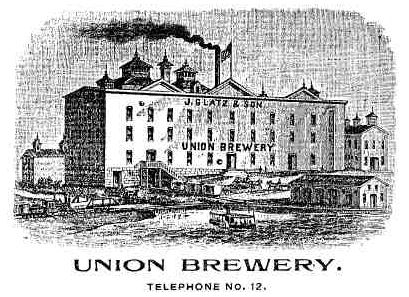 This remnant of Glatz and Elser’s Brewery is the oldest surviving brewing structure in Oshkosh. It was nearly lost, though. In 1974, when the area was being targeted for industrial growth, the Smith School PTA petitioned to preserve what was left of the brewery. The Oshkosh Common Council became involved and in 1975 the city purchased the land from Warren Basler with a promise from the Winnebago Conservation Club to raise $7,000 for restoration of the property. After months of volunteer work, a dedication ceremony was held and on July 4, 1976 Glatz Park was christened. At the dedication ceremony Common Council member Beatrice Techmiller said, “Glatz Park will be a place to experience nature and learn something about history at the same time." The part about experiencing nature came through, but you’ll have a hard time learning much about history there. What the park sorely lacks is a marker that tells the story of the brewery and its place in the daily life of the City of Oshkosh in the late 1800s.
This remnant of Glatz and Elser’s Brewery is the oldest surviving brewing structure in Oshkosh. It was nearly lost, though. In 1974, when the area was being targeted for industrial growth, the Smith School PTA petitioned to preserve what was left of the brewery. The Oshkosh Common Council became involved and in 1975 the city purchased the land from Warren Basler with a promise from the Winnebago Conservation Club to raise $7,000 for restoration of the property. After months of volunteer work, a dedication ceremony was held and on July 4, 1976 Glatz Park was christened. At the dedication ceremony Common Council member Beatrice Techmiller said, “Glatz Park will be a place to experience nature and learn something about history at the same time." The part about experiencing nature came through, but you’ll have a hard time learning much about history there. What the park sorely lacks is a marker that tells the story of the brewery and its place in the daily life of the City of Oshkosh in the late 1800s.
